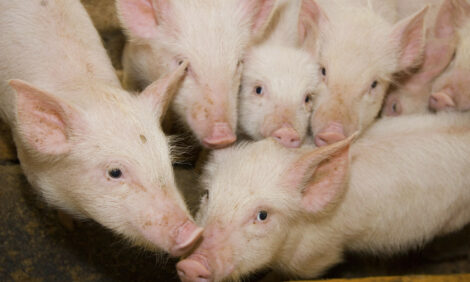



CME: Fire at Smithfield Closes Hog Slaughter Plant
US - Media reports said a fire at Smithfield’s Monmouth, Illinois hog slaughter plant occurred Monday night and has closed the plant for an “undetermined amount of time“, write Steve Meyer and Len Steiner.Reports indicated the fire happened in the rendering section of the plant and that there were no injuries.
According to Dr Steve Meyer, Vice President of Pork Analytics at Express Markets, who maintains listings of hog slaughter plants and estimated capacity, the impacted plant has capacity of about 10,700 head per day (for his most recent summary in National Hog Farmer see here).
The Daily Livestock Report (DLR) has discussed the important constraint that hog slaughter capacity in the fourth quarter of the year has played in the past. The negative impact on hog prices can be dramatic. Yesterday’s news caused hog futures prices to drop.
The industry will be closely monitoring the situation to see when the plant returns to harvesting hogs as peek slaughter weeks are in November and December.
On a broader topic related to slaughter levels, we turn to some comments regarding Saturday slaughter and packer margins, in both the hog/pork and cattle/beef sectors.
Harvest of animals on Saturday is the major tool used by packers, for a number of reasons, to adjust the number of head processed in a week. It allows packers to capitalise on positive margins without having to hire additional labour force.
When needed, packers pay overtime wages to employees in order to process on Saturday and even sometimes on Sunday. Saturday slaughter also allows packers to make-up for Monday holidays like Labor Day this week.
Besides holiday-week spikes, Saturday slaughter is seasonal and tracks with peak slaughter weeks. Peak cattle slaughter occurs in the Spring and Summer months. This year Saturday slaughter levels have been well above a year ago, but importantly have even been above the prior 5-year average (2010- 2014).
As pointed out in earlier DLR articles, cattle slaughter levels have been large this Summer. Packers have incentive to pay the extra labour and other costs of processing large amounts of animals on Saturday when their business is profitable. And both pork and beef packing have been very profitable recently.
The Livestock Marketing Information Center (LMIC), as do many others, estimate weekly gross margins for processing animals, that is the difference just between the cost of the animal and the value of the meat and byproducts produced.
Those costs and values are reported by USDA’s Agricultural Marketing Service, Market News Division. The cost included is just the animal and not the labour, transportation, facilities, etc., to process that animal.
LMIC has made those estimates for many years and in the last two decades the largest annual margin year for pork packers was 2014, and 2015 was the third highest. At the current pace, 2016 will be the second best year in relevant history for pork packers.
Annually, the calculated gross margin for slaughtering steers and heifers in 2015 was the third highest in the last two decades; the higher years were 2003 and 2006. Note that those higher years were pre the latest cowherd liquidation and resulting packer excess capacity period and also were pre-recession.
This year could easily surpass 2015’s level by more than 30 per cent and set a new 20-year high beef packer margin.
Back to hogs, the bottom line is that the economic incentive to slaughter hogs on Saturday is in place, but having all plants operating is a critical pre-condition to also using Saturday slaughter to help manage heavy supplies of live hogs in the fourth quarter.
If all plants are not operational, given forecast weekly slaughter levels there could be some very discouraging hog prices paid to producers. New packing plants scheduled for operation in late 2017 will help the industry breathe easier next year should another plant disruption happen.








